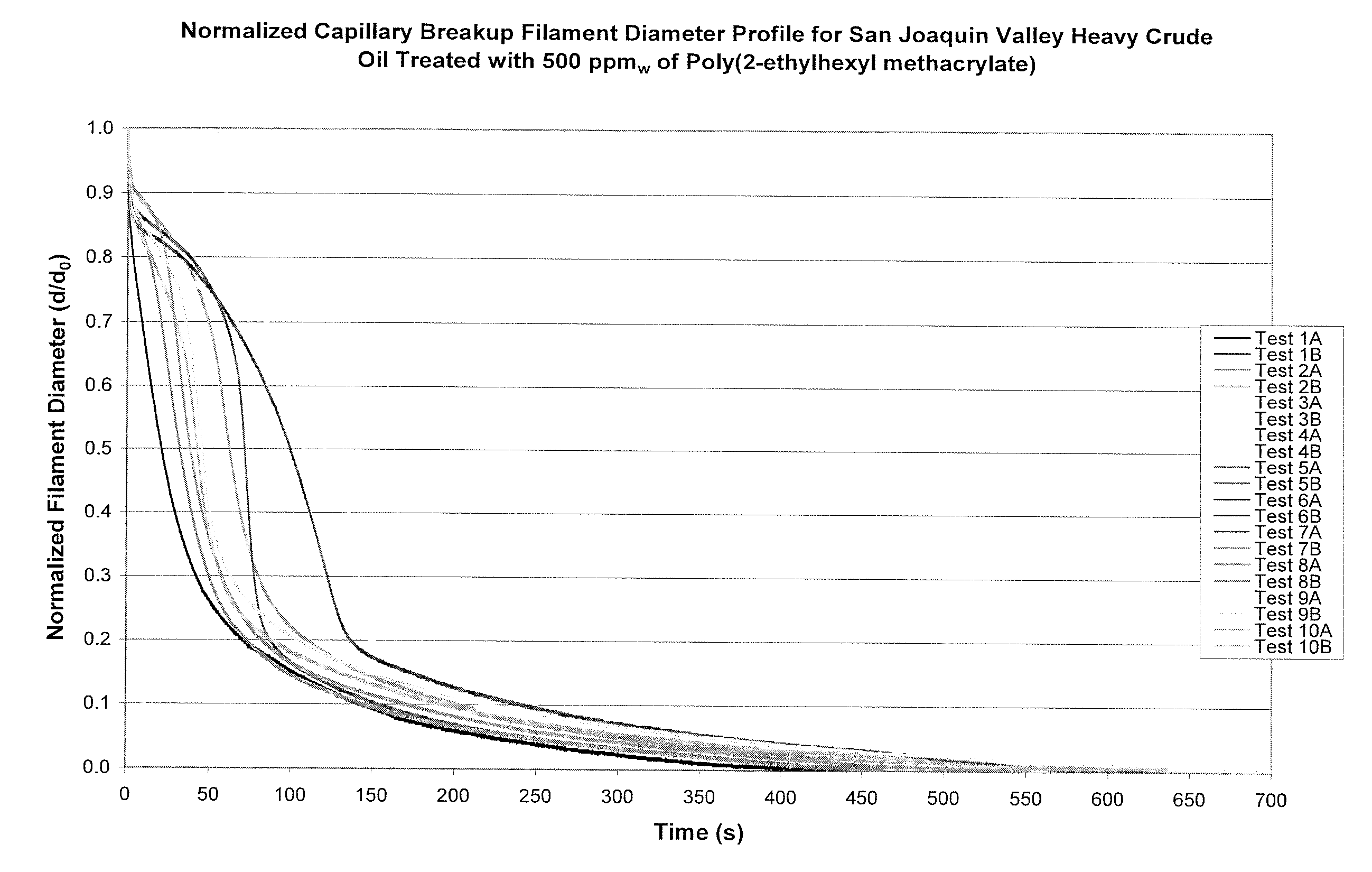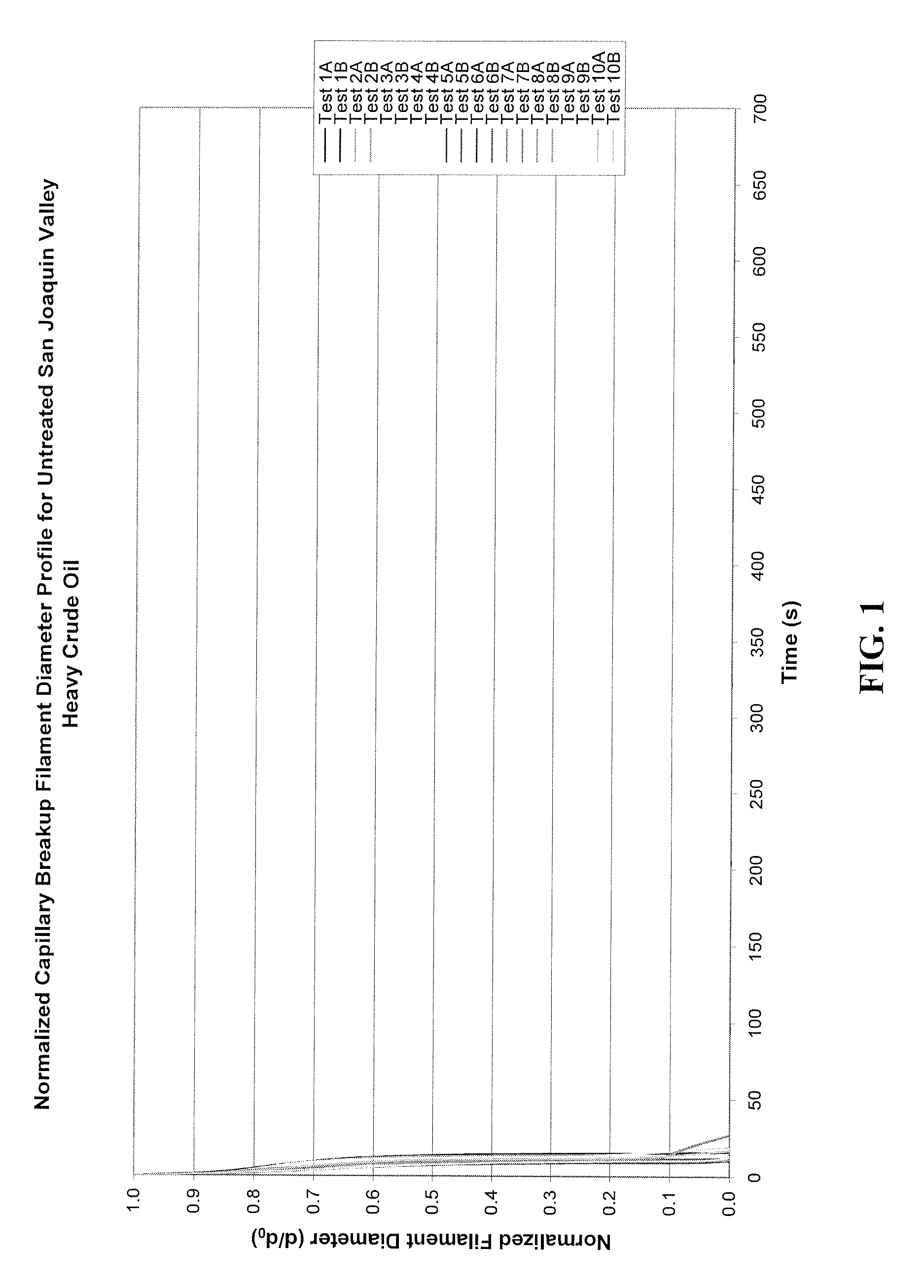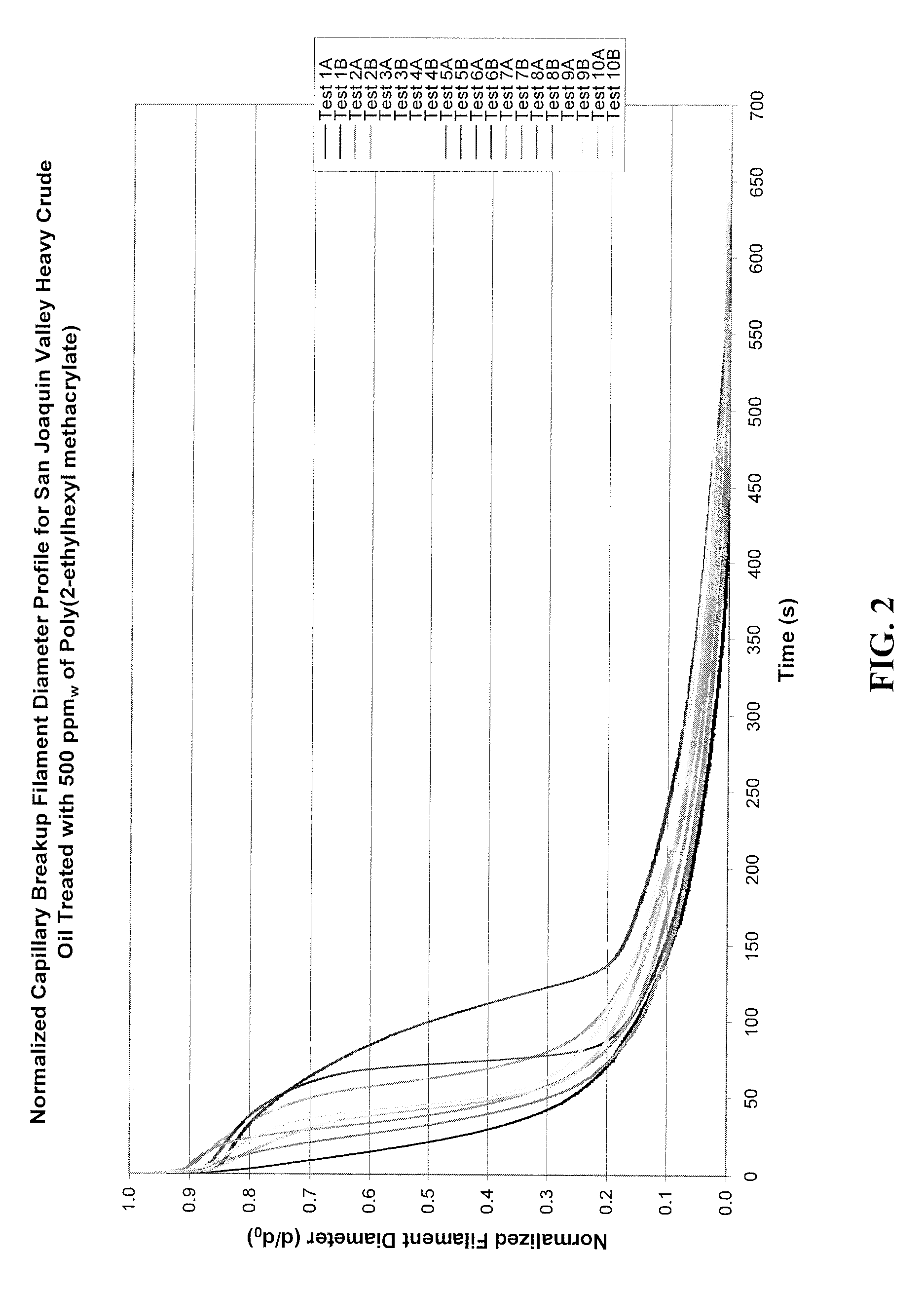Drag reduction of asphaltenic crude oils
a technology of asphaltenic crude oil and drag reduction, which is applied in the direction of hydrocarbon oil refining, wellbore/well accessories, sealing/packing, etc., can solve the problems of pipelines that limit the amount of pressure that can be employed, the problem of pressure drop is the most acute, and the fluid pressure drop is typical. , to achieve the effect of reducing the pressure drop
- Summary
- Abstract
- Description
- Claims
- Application Information
AI Technical Summary
Benefits of technology
Problems solved by technology
Method used
Image
Examples
example 1
Preparation of Polymer A and Polymer B
[0052]In this example, two formulations for the materials used in later examples are detailed. The resulting material in each procedure is a dispersion of drag reducing polymer in an aqueous carrier.
Preparation of Polymer A
[0053]Polymerization was performed in a 185-gallon stainless steel, jacketed reactor with a mechanical stirrer, thermocouple, feed ports, and nitrogen inlets / outlets. The reactor was charged with 440 lbs of monomer (2-ethylhexyl methacrylate), 558.1 lbs of de-ionized water, 41.4 lbs of Polystep B-5 (surfactant, available from Stepan Company of Northfield, Ill.), 44 lbs of Tergitol 15-S-7 (surfactant, available from Dow Chemical Company of Midland, Mich.), 1.86 lbs of potassium phosphate monobasic (pH buffer), 1.46 lbs of potassium phosphate dibasic (pH buffer), and 33.2 grams of ammonium persulfate, (NH4)2S2O8 (oxidizer).
[0054]The mixture was agitated at 110 rpm to emulsify the monomer in the water and surfactant carrier. The ...
example 2
LP 100 and LP 300
[0056]LP 100 FLOW IMPROVER (LP 100) and LP 300 FLOW IMPROVER (LP 300) underwent various tests described below and were compared to the experimental drag reducers of the present invention, Polymer A and Polymer B, as described in Example 1. LP 100 and LP 300 are drag reducing agents comprising polyalphaolefins. Specifically, LP 100 comprises poly(1-decene) and LP 300 comprises a copolymer of poly(1-decene) and poly(1-tetradecene). Both LP 100 and LP 300 are commercially available from ConocoPhillips Specialty Products Inc. The solubility parameter of the polymer in LP 100 was calculated to be 16.49 MPa1 / 2, and the solubility parameter of the polymer in LP 300 was calculated to be 16.54 MPa1 / 2.
example 3
Asphaltene Content and Elasticity Response (Affinity)
[0057]Crude oils ranging in classification from heavy crudes to light crudes were first tested to determine their respective concentrations of asphaltene and their API gravities. These same crude oil samples were also tested to determine their affinity for drag reducing agents as prepared in Examples 1 and 2. The results are listed in Table 1 below.
[0058]Asphaltene concentration was determined using pentane precipitation and filtration. For each measurement listed in Table 1, a 40-fold volume of pentane was added to approximately 16 grams of crude oil sample. The mixtures were agitated via rolling for an overnight period, and allowed to set for approximately 24 hours. The mixtures were then filtered through a 0.8 micrometer filter to retain the asphaltene. The asphaltenes retained were then weighed, and the weight percent was calculated based upon the original crude oil sample weight. API gravity was determined in accord with ASTM...
PUM
| Property | Measurement | Unit |
|---|---|---|
| boiling point | aaaaa | aaaaa |
| weight percent | aaaaa | aaaaa |
| weight ratio | aaaaa | aaaaa |
Abstract
Description
Claims
Application Information
 Login to view more
Login to view more - R&D Engineer
- R&D Manager
- IP Professional
- Industry Leading Data Capabilities
- Powerful AI technology
- Patent DNA Extraction
Browse by: Latest US Patents, China's latest patents, Technical Efficacy Thesaurus, Application Domain, Technology Topic.
© 2024 PatSnap. All rights reserved.Legal|Privacy policy|Modern Slavery Act Transparency Statement|Sitemap



